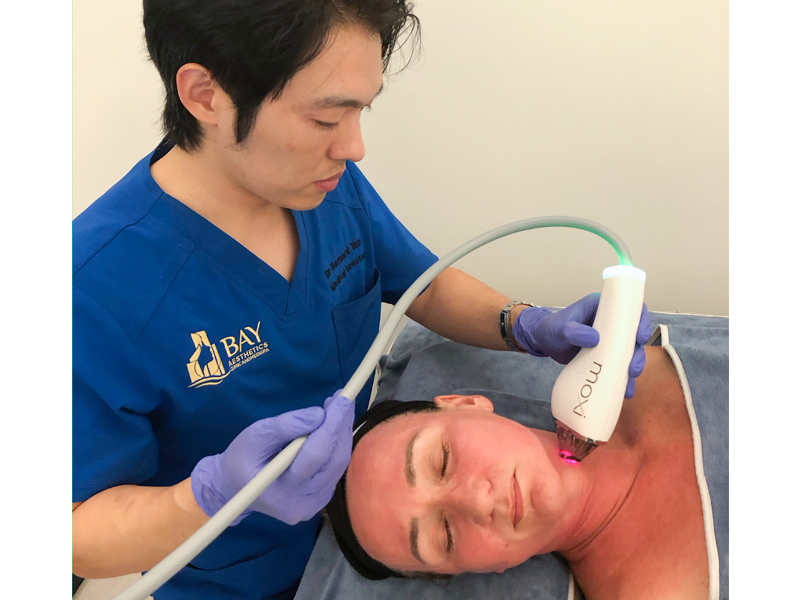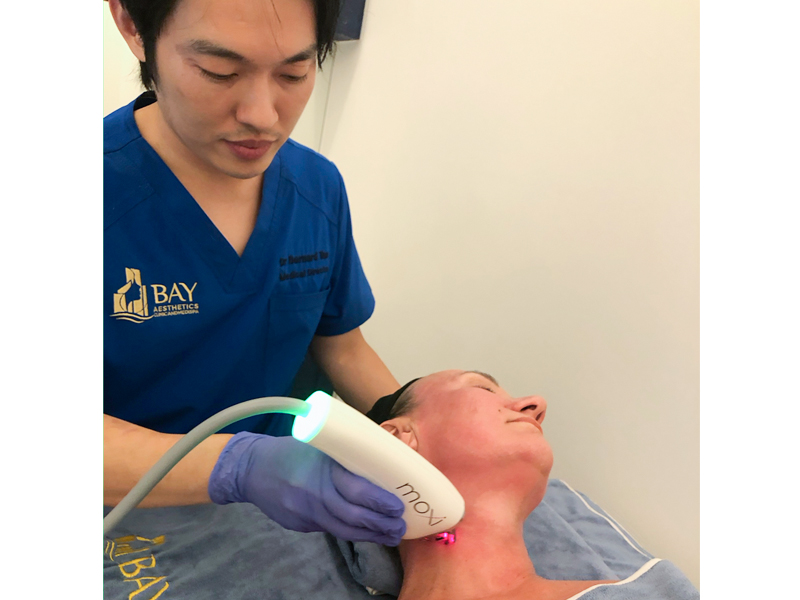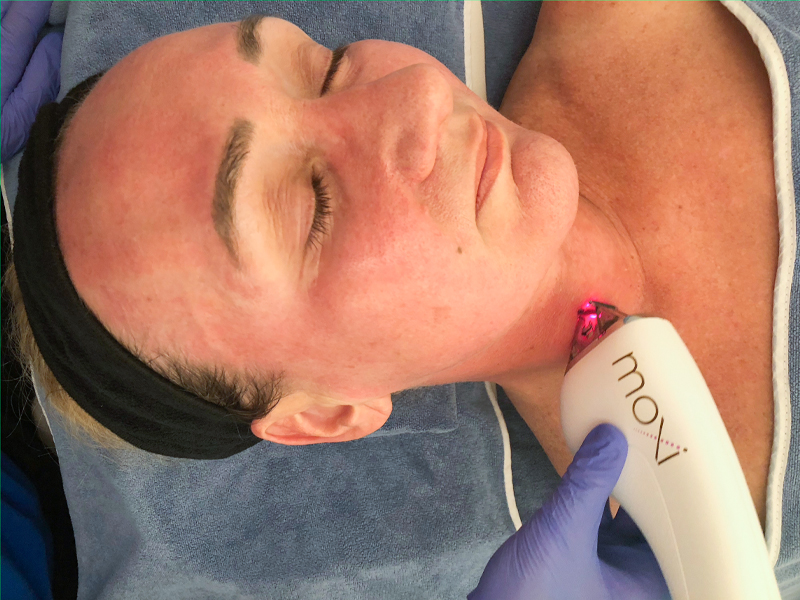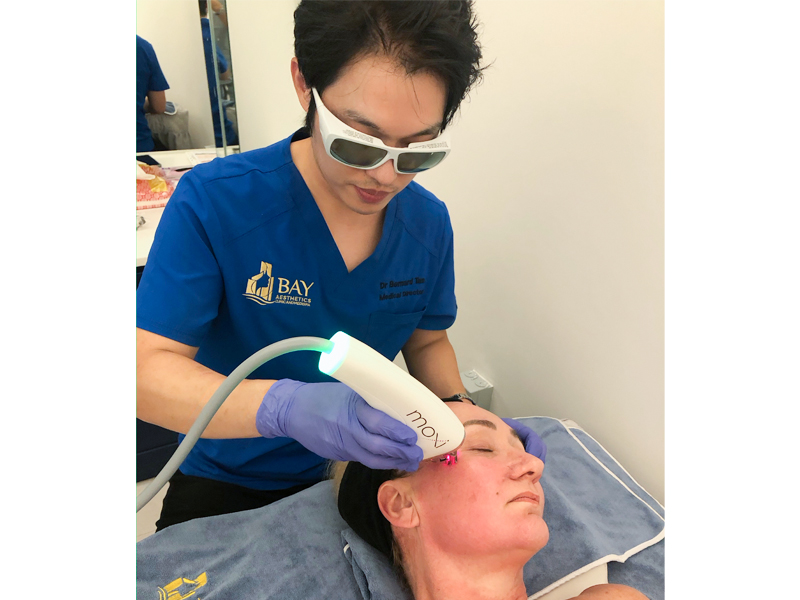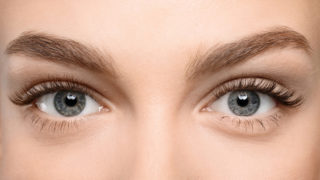Here’s our tried-and-tested lowdown on the fabulous new MOXI laser treatment – we discover how it works with BBL Hero for effective pigmentation removal, skin rejuvenation … and even pre-juvenation!
What is MOXI laser treatment?
MOXI is a 30-45 minute clinical laser treatment that’s perfect for working professionals. You could even do it in your lunchtime.
Like other light and laser-based technologies, it works by creating numerous microscopic areas of controlled injury.
This triggers a rejuvenating, wound-healing process that causes the skin to generate new collagen and shed unwanted pigment. The result? A smoother, brighter and firmer complexion.
A versatile all-rounder
By delivering energy to water in the skin layer, this remarkably versatile laser treats a wide range of skin concerns:
- skin rejuvenation
- removal of pigmentation and melasma
- sun damage, fine lines, uneven skin texture and open pores.
Unlike other light-based skin rejuvenation, says Bay Aesthetic Clinic’s Dr Bernard Tan, MOXI laser treatment is safe for all skin types in Singapore. What’s more, it can be used year-round, and you can have it done even after recent sun exposure. Now, that’s unusual!
Its three settings make it unusually versatile, adds Dr Tan. For younger people, aged say 30 to 40, Level 1 works as an effective prejuvenation treatment that can delay early signs of ageing and reverse signs of sun damage. Level 2 is moderately intense, aiming at revitalisation and maintenance: you’ll probably want numbing cream and should expect downtime of three to five days. Level 3 promises to transform and renew your skin, requiring numbing cream and a longer downtime of up to a week.
Dr Bernard typically uses MOXI on the face, neck and décolletage – but it can also be used on the body and arms. 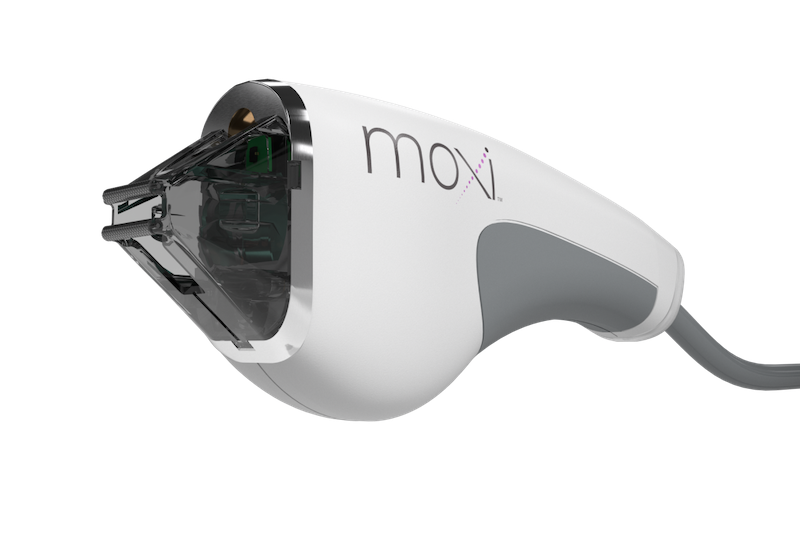
Danielle’s MOXI laser treatment review
“I had always avoided beauty treatments with downtime,” my colleague Danielle told me. “I wrongly associated them with pain and the potential for skin damage.”
Then she tried BBL Hero, another popular laser treatment in Singapore, and loved what it did for pore size, fine lines and pigmentation removal. Dr Bernard assured her that MOXI was the next logical step. He explained that the two treatments in fact paired very well together and could be done one after the other.
“I was glad that my treatment would include the neck and décolletage areas,” said Danielle. “Though I’ve been careful to use sunscreen on my face, I haven’t always protected my neck and chest properly – and the neglect – neck-lect? – was starting to show. From now on, I promise to do better!”
“Before we started, Dr Bernard assured me I would be red for only a couple of days. Then the top layer of skin would flake off over the course of five to seven days. One of his clinic nurses showed me her skin, which just looked a little scaly three days after her treatment. This was reassuring, because I had multiple events and activities lined up.”
The treatment
“The whole treatment took around two hours. First up was BBL Hero, which takes half-an-hour and is totally painless. Then they applied numbing cream and left it to take effect.
“During the 30-minute MOXI treatment that followed, I felt a little tingling around the forehead. I assumed this was where the skin was thinner, holding less water. Generally, though, it was pretty painless. I think the worst part of laser treatments is the sound effects, ranging from a distant jackhammer to the immediate crackle of burning hairs!
“After the laser, I enjoyed 30 relaxing minutes of LED light treatment aimed at accelerating healing. Finally, they applied a healing stem cell serum, gave me some to take home and told me to continue using it twice a day for the next week.”
Healing and recovery
“I was also reminded to stay strictly out of the sun and avoid outdoor activities for at least a week, avoid skin products containing AHA or Vitamin C, and use lots of moisturiser.
“The next day, it just looked just like a sunburn. I had a couple of client meetings, where I explained the colour of my face: not raging red, but not normal, either. On Day 3, I wore light makeup to a lunch and dinner event, and the redness was hardly noticeable at all.
“By Day 4, I was starting to get a little scaly and dry. From Days 5 to 7, the pigmentation started to flake off. The neck and décolletage areas lagged a couple of days behind the face, so I ended up using a gentle exfoliating cleanser around Day 7 to remove the dry skin.”
Result!
“The pigmentation marks on my neck have almost totally gone, and my skin is smoother, firmer and more even in tone. People are commenting that I am glowing! And strangely, though my skin tone is normally a little red, it looks less so now.”
The nitty-gritty on MOXI laser treatment in Singapore
MOXI is a 1927nm thulium fractional non-ablative laser that targets the water in the skin layer.
For best skin rejuvenation results, Dr Bernard recommends monthly treatment for three to five months. How much will this cost?
- MOXI alone is $1,200 per session (or $1,000 per session for a package of three or more)
- BBL Hero +MOXI costs $1,800 per session (or $1,500 each for three or more sessions)
Considering that the combined treatment is a two-hour procedure for both laser pigmentation removal and rejuvenation that includes face, neck and décolletage, plus the LED healing treatment, we feel it’s a worthwhile investment… depending on budget, of course. What do you think?
Bay Aesthetics Clinic
B2-12 Marina Bay Link Mall, Marina Bay Financial Centre
8A Marina Boulevard
8428 7811 | FB: @bayclinicsg | IG: @bay.clinic

